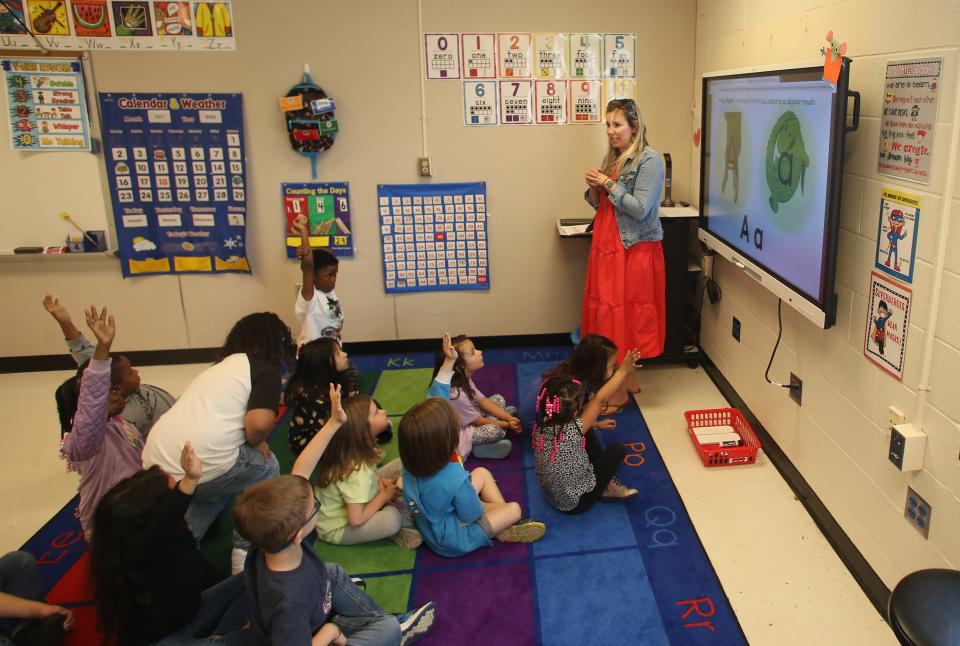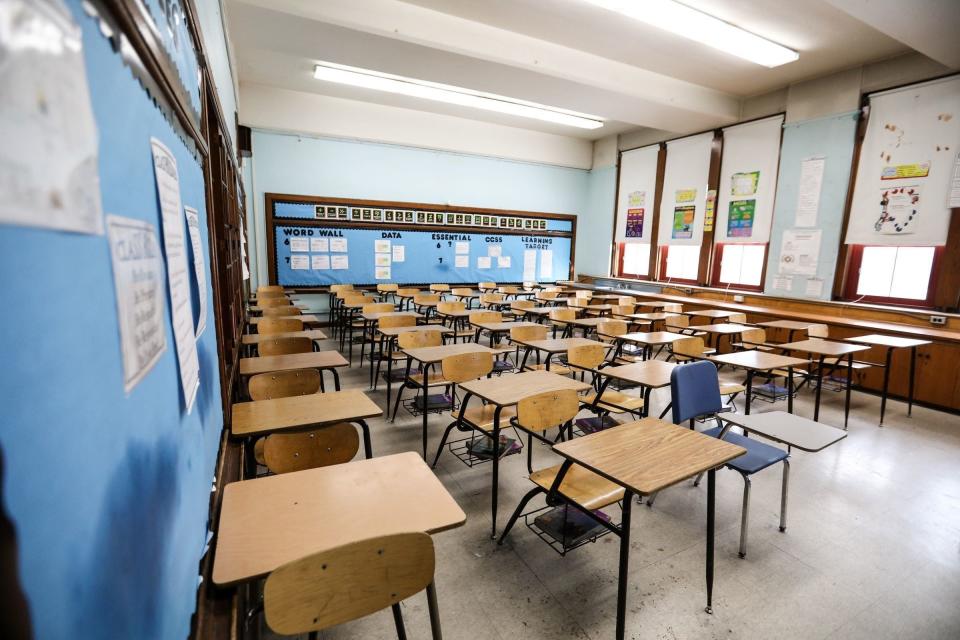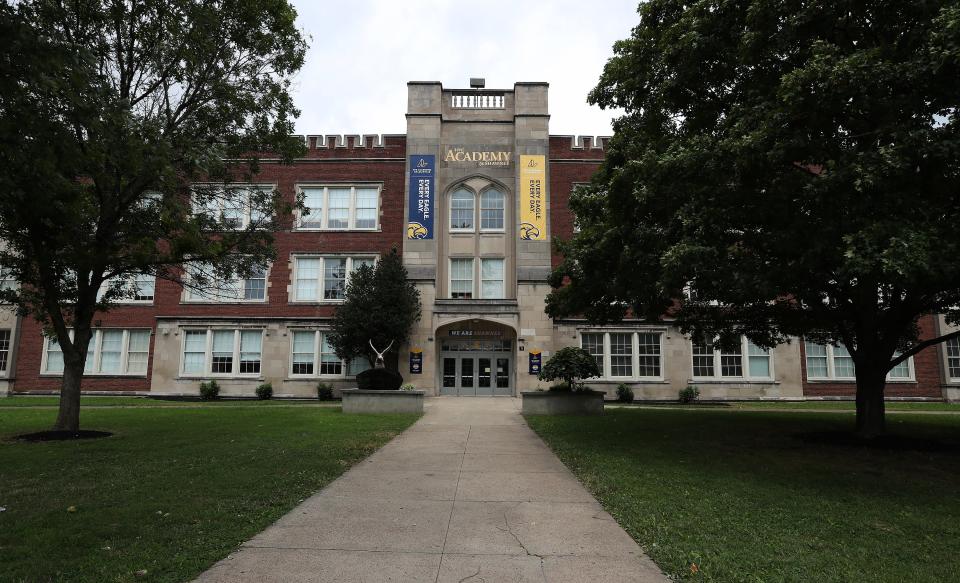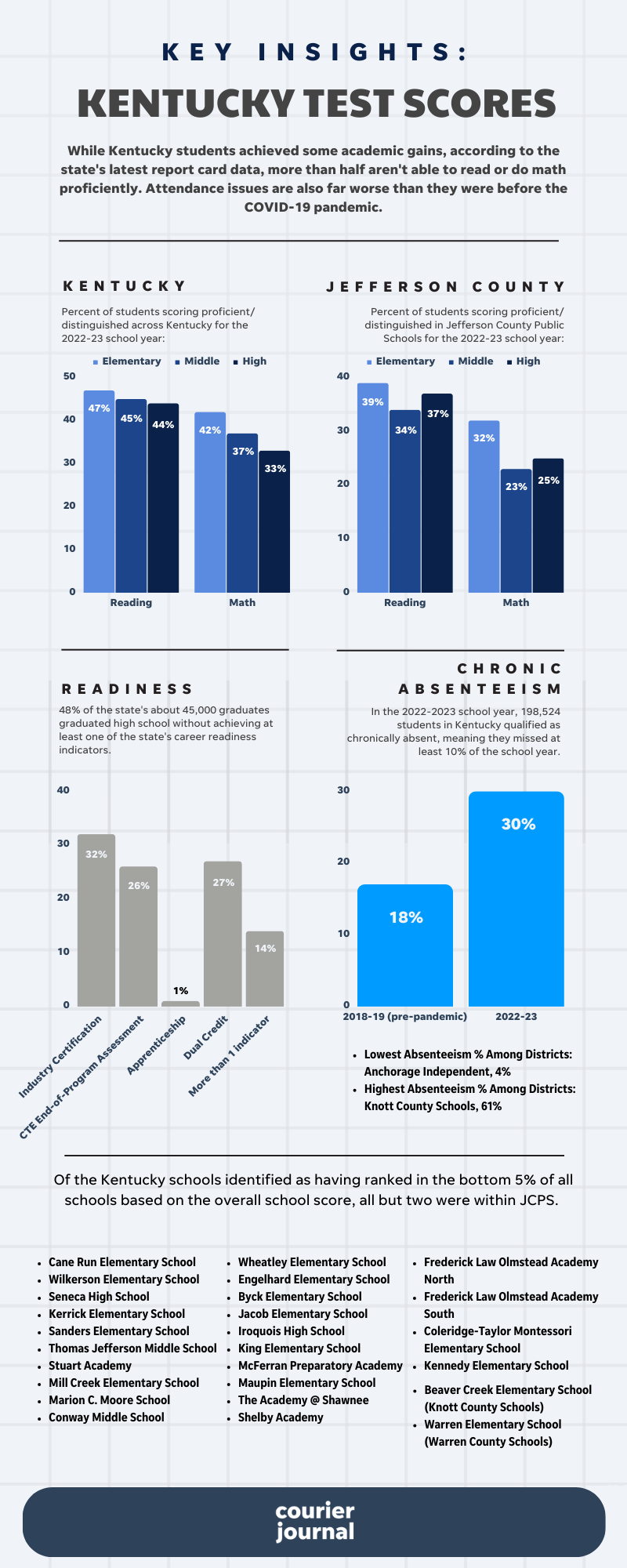Reading, math and attendance: Here's how Kentucky students did on state assessments
Kentucky children are still struggling in the aftermath of the pandemic, with more than half unable to read or do math proficiently.
Attendance issues are also far worse than they were before the pandemic, according to state report card data released late Tuesday night.
“We must not underestimate how much of an impact the COVID-19 pandemic has had on our children," Robin Fields Kinney, Kentucky's interim education commissioner, said in a release that accompanied the data. "We know that changes in the way instruction was delivered from 2020 to 2022 had an impact on student learning, despite the tremendous efforts of Kentucky educators and parents to remediate those impacts.”
The 2022-23 school year was the first full one since the pandemic that Kentucky students weren't forced to learn virtually. But recovery, Kinney said, will take multiple years.
"There is still a lot of work left to be done," she said.
Below are some highlights from what the data shows.
SEE THE DATA Here's a searchable database to see how your school did
Are Kentucky students proficient in math and reading?

Less than half of Kentucky students achieved proficiency in math and reading, though the percentage of students who were proficient improved at some grade levels compared to a year earlier, according to the assessments.
At the elementary level, 47% of students were proficient or distinguished readers, up from 45% in 2022. But 26% were ranked as novice readers, the state’s lowest mark.
Meanwhile, 45% of middle school students and 44% of high schoolers were proficient in reading. The year prior, 43% of middle schoolers and 44% of high schoolers achieved proficiency.
In math:
42% of elementary students were proficient or distinguished, up from 38% a year earlier.
37% of middle schoolers were proficient, the same as in the previous year
33% of high schoolers were proficient, compared to 36% the year prior
Kinney said the metrics show Kentucky school districts have made strides with early literacy, pointing to the state department's teaching training, known as LETRS, that is rooted in the latest reading science. More than 4,000 Kentucky teachers and administrators have voluntarily signed up for the training.
More: Kentucky schools invest more money in reading program experts say is harmful
“Kentucky’s educational challenges require thorough solutions, and even though it may take some time to see the fruits of our labor, our children will be better for the efforts we’re making today,” she said.
How widespread is chronic absenteeism?

Student attendance has suffered vastly since the pandemic, with the rate of Kentucky students labeled chronically absent jumping to 30% last year from 18% the year prior to the pandemic.
In the 2022-2023 year, 198,524 students in Kentucky qualified as chronically absent, meaning they missed at least 10% of the school year.
This means students missed a significant amount of instructional time, compounding the academic losses that occurred when schools went virtual. They also missed out on the socialization experiences schools provide.
Further troubling is that in Kentucky, districts are funded based on student attendance — so more absences equates to less dollars.
“We must address the issue of chronically absent students, as their continued absence hinders their educational progress and overall well-being,” Kinney said. “Every child deserves the opportunity for consistent attendance and a chance to thrive in the classroom. It is crucial that we work together and find solutions to combat chronic absenteeism."
Within Jefferson County Public Schools, the state's largest district, 38% of students were chronically absent, up from 23% before the pandemic. Neighboring districts had far better attendance, though, with Anchorage Independent having the smallest rate of chronically absent students at 4%. Oldham County Schools reported 14% of its students were chronically absent.
Dozens of smaller districts saw rates far higher, though. Knott County Schools, which was heavily impacted by the flooding in Eastern Kentucky in 2022, had the highest rate of all districts at 61%.
Which schools ranked in the state's bottom 5%?

There were more than two dozen schools ranking in the bottom 5% of all schools based on the overall school score. All but two were within JCPS.
The JCPS schools were:
Cane Run Elementary
Wilkerson Elementary School
Seneca High
Kerrick Elementary
Sanders Elementary
Thomas Jefferson Middle
Stuart Academy
Mill Creek Elementary
Marion C. Moore School
Conway Middle
Wheatley Elementary
Engelhard Elementary
Byck Elementary
Jacob Elementary
Iroquois High
King Elementary
Mcferran Preparatory Academy
Maupin Elementary
The Academy @ Shawnee
Shelby Academy
Frederick Law Olmsted Academy North
Coleridge-Taylor Montessori Elementary
Kennedy Elementary
Frederick Law Olmsted Academy South
The other two schools were Knott County's Beaver Creek Elementary and Warren County's Warren Elementary.
Are kids showing up and leaving Kentucky school's prepared?
Kentucky children are showing up to kindergarten less prepared at an increasing rate, and many seniors are leaving high school unprepared for college or a career.
While just over more than half of kindergartners were ready for school the year prior to the pandemic, that rate has fallen to 46%. Asian students were the most prepared at 61%, trailed by white students at 49%, Black students at 40% and Hispanic students at 27%.
On the other end of the spectrum, 48% of the state's about 45,000 graduates left high school without achieving at least one of the state's career readiness indicators.
Below are the percentage of students who did meet one indicator:
Industry Certification, 32%
CTE End-of-Program Assessment, 26%
Apprenticeship, 1%
Dual Credit, 27%
More than one indicator, 14%
Contact reporter Krista Johnson at kjohnson3@gannett.com.

This article originally appeared on Louisville Courier Journal: Kentucky report card: How students scored on state assessments

